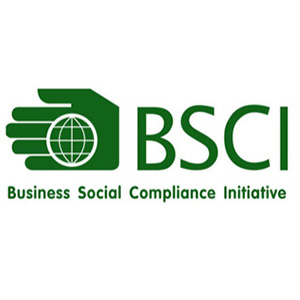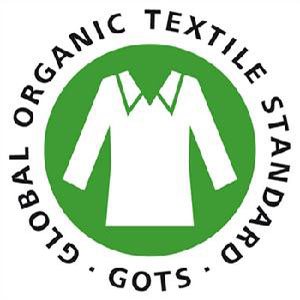The traceability guidelines of GRS certification:
1. Guidelines and regulations regarding the use of product transportation and certificates
1.1 For materials intended to enter the GRS system or materials transported between GRS-certified companies, the contents should be replaced or contaminated during transport. At the same time, you must provide invoices for shipping or shipping documents (such as bills of lading, etc.).
1.1a The invoice or shipping document shipped must state the following:
- The name and address of the company being certified and the consignor or consignee.
- The name and quantity/volume of the product being shipped.
1.1b For raw materials ready to enter the GRS system, there must be a corresponding material declaration to prove. Raw materials used by raw material recyclers or intermediaries are collected from different suppliers and added to the GRS system. They must be certified by the GRS raw material declaration document and include the following:
- the name and address of the company being certified;
- Signature of the entity unit declared by GRS;
- the name and address of the supplier and the corresponding quantity of raw materials;
- Declaration documents of raw material suppliers in compliance with local labor regulations;
These documents must be able to ensure traceability of raw materials into the next production chain or final product.
2. Guidelines for the control of purchased products
2.1 Upon receipt of a GRS-certified product or a GRS-approved raw material, the certified company is obliged to check:
- whether the documents accompanying the package or container provide the specific content mentioned in Guideline 1.1;
- the overall condition and/or quality of GRS certified products or materials declared by GRS;
- the number of GRS certified products or raw materials declared by GRS;
- Raw material suppliers comply with local regulations.
Companies participating in the certification must clearly document the results of the inspection. If there is any doubt as to whether the relevant product complies with the above rules at the time of inspection, the product may be processed only after the suspicion is lifted and the above rules are proved. Prior to this product, the product must not be unloaded unless strict isolation measures are taken. Based on the management of the above GRS to ensure the integrity of the entire production line.
2.2 The manufacturer and/or collector of the recycled product must obtain a written statement from the supplier of the GRS raw material (or product) entering the GRS system and verify it (this statement must be associated with the contract) ).
2.3 Raw materials are sourced from verifiable government or private recycling standards and documents are provided to indicate that the relevant certification has been carried out and approved for inclusion in the certification system. These products are considered raw materials for legal GRS claims.
2.4 Sellers who are recycled products (whether pre-consumer or post-consumer) must obtain a valid transaction certificate from all companies that purchase the product and confirm it. Upon receipt of the product, the certified company must check the integrity of the package or packaging and must review the source and nature of the product based on the information in the label/declaration document (the format of the statement can be obtained from CUC). If there is any doubt about the source of the product, it can only be disposed of or packaged if the product is clarified.
2.5 In order to track the quantity of GRS materials (raw materials) provided, certified companies must monitor and track the GRS materials (raw materials) provided.
2.6 The company must maintain the original documents for at least 5 years. These documents confirm the status of the purchased product (GRS), including: the documents accompanying the product, and a copy of each certificate (issued by a qualified certification body).
3. Guidelines for management
3.1 The certified company shall ensure that the auditor can engage in the following matters:
3.1a track the source, source, nature, quantity and use of all materials delivered to a particular unit;
3.1b track the source, source, nature, quantity and destination of all products leaving a particular unit;
3.1c Track the source, source, nature, quantity and destination of all internal waste;
3.1d Check the source, nature, quantity, additives, substances and ingredients used in the preparation of the prepared GRS materials. This includes calculation of the ratio of materials derived from certified and non-certified sources, the ratio of pre-consumer and post-consumer waste, and the number of purchases and the ratio of the number of resources in the certified company's own.
3.2 The certified company must document the nature, quantity, source and/or destination of all products received and delivered (including the name and address of the relevant buyer and the date of delivery).
3.3. The certified company must maintain a GRS declaration document issued at the time of shipment, or a copy of these GRS declaration documents. For the manufacturer, the declaration documents and any applicable transaction certificates are included.
3.4. The certified company must be able to perform a total balance calculation and archive (as described in Standard 5).
4. Guidelines for quality control
4.1. The accredited company must produce a GRS file system plan that describes the entire process, including risk points and flowcharts.
4.2. The accredited company should also establish and implement a system to ensure the quality of the product, through which all raw materials, all semi-finished products and all products can be tracked and identified before, during and after processing and production. During storage and processing, risks such as contamination with foreign materials or mixing with products that have been contaminated with foreign materials may occur, and these risk points must be identified and documented. The preventive measures taken must be clarified and strictly enforced.
4.3 Transportation of GRS products must be hygienic and clean to avoid mixing and contamination with products not produced in accordance with relevant regulations.
When using a dedicated transport, it is necessary to obtain a written statement from the shipping company. This written statement should state that the loading vehicle or tool has been thoroughly cleaned and disinfected. Moreover, the certified company (consignor) must also conduct random inspections of the loaded vehicles. Inspection reports must be verifiable at any time as needed.
4.4. Specifications for raw materials and products (semi-finished products) should be recorded and available to relevant personnel in a timely manner.
4.5. Any external storage location shall be considered part of the facility, so the provisions applicable to the facility shall apply equally to the storage location.
5. Guidelines for calculating the quantitative ratio between GRS materials and non-GRS materials using the total balance calculation method
5.1 In order to be part of the GRS system, a portion of the material produced (measured by volume or weight) must come from a GRS-approved or certified raw material supplier and is 100% free of any contaminants. The total annual quantity of GRS material is calculated by the total balance calculation formula.
{(ΣX - (ΣY + ΣZ)} + {(ΣA + ΣB) - (ΣC + ΣD + ΣE)} = 0
ΣX= Annual total amount of GRS recycled materials received
ΣY= GRS Recycling materials storage (production, shipment, testing) annual total
ΣZ= GRS Recycling materials used after the annual inventory total
ΣA= GRS Recycled materials for annual production
ΣB= Total amount of non-GRS raw materials (auxiliaries, other fibers, embroidery, etc.) for production
ΣC= total loss during production
ΣD= Total amount of raw materials sold after rejection or quality inspection in stock
ΣE= Total amount of finished or shipped goods
This data should be verified during the GRS annual review and must be consistent with the contract. Deviations greater than 5% will be considered inconsistent with the contract and may be excluded from the GRS certification system. The percentage of waste should be included in the calculation of the total balance. The certified company must clearly state the proportion of pre- and post-consumer waste used throughout the declared GRS product.









